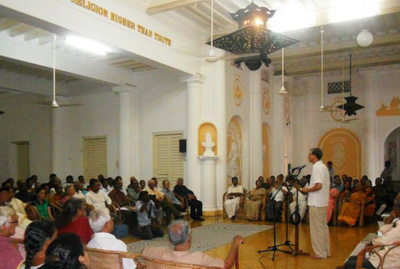Surviving the End Times
Printed in the Fall 2014 issue of Quest magazine.
Citation: Elsinger, Nance. "Surviving the End Times" Quest; 102.4 (Fall 2014): pg. 143-145.
The obituary of long-time Theosophist Roger Elsinger was published in the Summer 2013 issue of Quest.
He and his partner, Nance, met through Theosophy. Some Quest readers were at their May 1989 wedding by the lily ponds in the courtyard of the Krotona Institute of Theosophy in Ojai, California. By that time, Rog had joined Nance in working with Joy Mills at the Krotona School. Drawn together by questing minds and hearts, the couple shared a Theosophical worldview that enabled them to navigate the ups and downs of an emerging relationship.
In this article, Nance shares her experience of end times in a marriage.
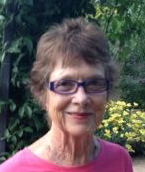 While the period from Roger's diagnosis to his death was only one month, the "end times" began fourteen years earlier, in the winter of 1998. Rog and I missed a turn in the road and went flying over an embankment. Instantly, our lives as we knew them changed.
While the period from Roger's diagnosis to his death was only one month, the "end times" began fourteen years earlier, in the winter of 1998. Rog and I missed a turn in the road and went flying over an embankment. Instantly, our lives as we knew them changed.
Our new pickup truck—driven less than a hundred miles before it was totaled—lasted long enough to drive us through some forbidden door, into some dream world about end times. That shiny blue pick-up dropped us down thirty feet into a bank of pure, fluffy snow covering the impenetrable black icy ground. Here in this silent underworld the unconscious assumption that maybe we could escape the inevitable cracked.
Physically, we did survive. For three months while I recovered from our auto accident in a spinal brace, Rog nursed me back to health. But even after I had healed, the thought that our lives could end so quickly stayed with us. Something inside of each of us shifted. We realized that we needed to prepare for the end times.
Rog and I sorted and assembled the legal documents to prepare for our deaths so we could get on with living as before. We set up a revocable trust, wrote wills, and signed the necessary legal papers. Each of us drafted funeral plans, inventoried our possessions, and determined our successions. Years later, after our move to Albuquerque, we bought pottery burial urns and arranged for our cremations.
We put our death collection in a black travel bag in plain view so our adult children would know where to find it. We updated our trust several times as we ruminated about small details over the years. Every day we looked at that black bag on its special hook by the door—dusting, polishing, and straightening it—until it became a presence.
The black valise became a conversation starter, something focal like a cross on the wall, but free from all secular taboos, so that an unwary guest could ask, "Are you planning a trip?"Which of course gave us the opportunity to reflect on that trip a bit more. It was clear every time we looked at that bag, more questions arose that had nothing to do with paperwork.
Ostensibly, the process of packing our black bag was all about taking care of business so we could get back to traveling life's path together as before. By making our intentions as clear as possible, we wanted to protect each other and our families from as much of the emotional chaos that can happen at the end of life as we could.
But to our surprise, something else happened. The black bag attended to the superficial uncertainties about our deaths so that we could reflect on deeper mysteries independently. It was here, in our opposite explorations, that Rog and I found our worlds alight again with color.
Before I continue, some background may be helpful. When Rog arrived at the TS in Ojai, he was searching for truth. After years of education, Rog began his adult life as a parish priest only to become disenchanted with the Catholic institution. He went on to marry and father a child. When he and his first wife divorced, Rog felt driven to discover life on his terms rather than those dictated by the Catholic tradition. He traveled and explored, meeting new people, experiencing other cultures, and connecting with those who were exploring spirituality beyond fundamentalism.
When I met Rog I was leading an independent, busy life. Divorced for many years with three nearly adult children, I had enjoyed a successful career creating the first statewide clearinghouse for oral history holdings. In 1984, needing change and expansion, I set out alone driving from Denver. Reaching Ojai, I discovered Theosophy and moved within two months. The next fall, I became a student at the Krotona School and then was hired by the director, Joy Mills, to help national and international students strengthen their group work.
Rog and I could not have been more different. Working together in the school, we saw each other teach. Rog's style was to tell students what he had discovered and believed to be true, while mine was to draw out what the student already knew. We learned from each other and allowed our relationship to grow and nurture our best qualities. We knew that we had to be together.
Our differences were stark. Rog actively made things happen while I kept tradition and the peace. He left situations when they stopped working for him, while I stayed until I had something else in place. Rog enjoyed and protected his alone time; he didn't see value in discussing his feelings or emotions; his approach was primarily cerebral. His family was not close; they had few rituals and communicated infrequently. Holidays in my family, on the other hand, were joyfully celebrated with cards, gifts, and phone calls. My relatives enjoy being together, and news is shared on a regular basis no matter how far apart we are.
While Rog had plenty of psychological baggage related to his Catholic upbringing, I was weighed down with material trappings. When I moved to Ojai, I had a truck full of furniture, collected during my previous marriage. Rog moved to Ojai in a Volkswagen bus containing all his possessions; several boxes of books, some tools, and a few clothes. Frequent moves were not unusual for Rog, while moving to Ojai was my first move out of Colorado, my childhood home and the place where I raised my children. My attitude was that you kept what you might need, just in case, while Rog believed you kept only what you used and you can always get what you need when you need it. Rog was appalled by watching my process in deciding what to keep when my parents' home was dismantled after their deaths in 1999. Sentimental items didn't resonate with him.
For nine years, we worked for the good of the other and our relationship and let our personal desires fall by the wayside. We compromised and found a middle way between our habitual ways of being. Rog experienced the pleasures of a celebration, and I learned the value of alone time. Our marriage made us more flexible, patient, and loving. I became more adventuresome—even taking flying lessons. I became less interested in gaining approval (even his!). I realized there is no "right"way to do things and to perceive the world; everyone is different, and that is truly the beauty of this world. We both mellowed and softened.
After surviving the accident, the pattern shifted. Instead of merging our ideas and establishing a middle ground that worked for both of us, our paths of discovery diverged. While we happily shared the same home base and met at the end of each day to swap stories, our individual souls again became restless to connect to something beyond.
For those remaining years when the black bag was looming, Rog sought his truth in the distant cosmos. He went back in time to the material origins of our universe. As a volunteer for the New Mexico Museum of Natural History, his special expertise was Mars, the red planet. Rog was mapping the surface of Mars using data from the Mars Rover expedition to visualize the surface coordinates. Rog had been working with a Washington, D.C. software company to create the necessary tools to contour the topography of Mars. In addition, he produced regular videos on the Rover's progress as part of the Mars exhibit. Just days before his cancer diagnosis, Rog continued his daily bicycle ride to the museum's space science department.
By coincidence (and HPB would say there is no such thing), Rog had all three of his main astrological houses in Aries. Swirling together in a constellation of meaning were Mars, Ares, war, fire in the belly, and, not surprisingly, the liver. While I cannot know exactly how all these pieces fit together, I know that there were battles within him that he struggled to resolve all his life. But I do know that before Roger died, he had, as he conveyed in this letter to friends and family, found peace.
In the days since my diagnosis I have experienced a calmness and centeredness such as religious faith had never provided. I have found a sense of place and process with the worldview of evolutionary cosmology such as I have searched for relentlessly in my seventy-seven years . . . And it is increasingly feeding my spirit daily with a sense of readiness for every present moment in this process of dying . . . a sense of contributing to the spreading of a new approach to this part of our process called living. I feel honored to enter this process consciously. I am finally learning how to live in the moment. Fear and hope have no place in this process. It is a readiness and willingness of an utterly deep knowingness that we are truly all in this together.
While Rog was going into outer space, I began a journey through inner space. Unlike Rog, with his objective approach, I went to subjective experience to find meaning. I kept a dream journal and learned the language of symbols and the soul's journey through Tarot. I took up painting—mapping the images that appeared in dreams using color, shape, and line. Through close friendships with a group of women, I learned about the power of community, trust, and listening.
Our private journeys prepared each of us for the news one sunny morning in early March of 2013. Our doctor delivered the diagnosis to us in our living room over speakerphone: "Roger, you have inoperable, irreversible liver cancer."I had always thought we would have more time together. While I cried, I saw Rog transform as calmness and clarity came over him and his spirit, opening to unexpected possibilities, readied itself for whatever might follow.
The black bag, once our captor, freed us to fully experience each remaining moment. Rog initiated a new volunteer into the Mars project so that the work he had been doing could continue. He composed reflections for those he was leaving. His initial reaction never wavered. Throughout his dying process Rog maintained his curiosity and serenity. Hospice entered our lives, and our community of family and friends gently joined us in trusting and celebrating his dying process. We managed the pain. His peaceful breathing slowed until it left him for good.
Once our carefully crafted rituals of passage had come and gone, things became very quiet in my world. It seemed as if I slept for nearly a year. In the depths of dreams, Rog and I met five times. In the first two dreams, Rog was in his office at home; he was sitting in his armchair in the dark. When I came into the room, he told me "I'm all right. I don't need anything. I am just fine."
In the third dream, he was excited about finding a good price, $7000, for a satellite dish he wanted installed on our roof. I did not know he needed such a dish for his museum work, but he assured me that it would benefit me too, because I could get better television reception. In the dream, I told him I wasn't happy to have him back alive if he was going to pretend that his desires were mine. I realized I could no longer afford him. When I woke up, I smiled at the image of seeking life at a distance. It was then that I knew I could stand my ground and focus on my earthly life.
The fourth dream took place on a cruise ship; I came to our cabin and found that Rog had packed up all my clothes and had taken them away. I was upset but knew he had only wanted to help. Then I saw that my purse was still there plus a carry-on bag that looked very full. There were also two hats and two pairs of gloves that I was trying to stuff into the carry-on bag when the loudspeaker announced we must leave the ship. As I woke up, I realized that my identification and money were in my purse and that the carry-on bag probably contained other items I might need. So even though it didn't appear so, I have everything I need to continue my journey.
The last dream also involved bags. I was on a large porch and I saw that all of Rog's suitcases were packed and rain was coming down. I went into the house and told Rog to bring in his bags as they were getting wet. He just looked at me, shook his head, and said, "I don't need them."It was at that moment that I realized that I must now move on alone. Through these dreams, I learned that my journey continues and I am free.
The end time for our relationship was a point on a spiral of meeting, growing, changing, and then releasing to begin again by sorting through who I was, have become, still am, and hope to be in the future. The cycle of this relationship, the effect of Rog's personality in creating a life together, has changed me. I have become more comfortable expressing myself to others because Rog honored and respected my views. I am more comfortable with asking for what I need and want without feeling I must justify my position. I look within myself more and more for guidance, not as concerned with people pleasing and everyone else's reactions. All of this I take forward now. I am profoundly grateful for the life that we had together.
Like all partners, Rog and I did our compromising in the creation of our very workable relationship. Rog was more comfortable in his mind than his body, so I let certain desires go dormant for a time. Right now I am socializing with friends, taking dancing lessons, golfing, bike riding, and savoring long walks. I move into my next stage with a greater appreciation for varied views, knowing that we are all stronger by exposure to different ways of seeing the world and making individual choices. I have a greater understanding of the woman that I am and the faith and intuition that have always been a large part of me.
After Rog died, I took the black bag off the hook, removed his documents, and put the bag away. For a time, the space remained empty. Now it is the place for my new, brighter, lighter, flowered cloth bag. This bag reminds me of the many miles I will travel as I continue my journey, alone again.
Nance Elsinger became a Life Member of the Theosophical Society in 1985. She worked at Krotona School of Theosophy until the fall of 1991. After moving to New Mexico, she continued her involvement in the TS by leading workshops at Krotona and Olcott and by participating in the Silver City, New Mexico study group as well as in a group now developing in Albuquerque.


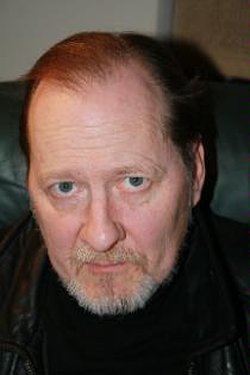 The act of revealing, or disclosure—that’s what the word apocalypse used to mean. It meant revelation. It meant a rent in the veil; an opening up that revealed divine purpose.
The act of revealing, or disclosure—that’s what the word apocalypse used to mean. It meant revelation. It meant a rent in the veil; an opening up that revealed divine purpose.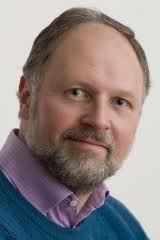 Winged beasts from the abyss. Angels of bottomless pits. Lakes of fire. These are some of the traditional images of apocalypse. Lately Hollywood's restless imagination has added new images to the gallery: planets crashing into earth, invasions by malign and omnipotent aliens, ecodisasters on a global scale.
Winged beasts from the abyss. Angels of bottomless pits. Lakes of fire. These are some of the traditional images of apocalypse. Lately Hollywood's restless imagination has added new images to the gallery: planets crashing into earth, invasions by malign and omnipotent aliens, ecodisasters on a global scale.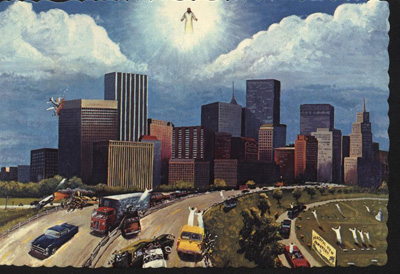


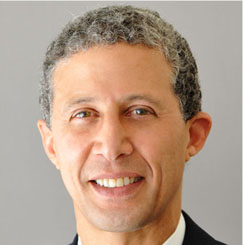 Since the close of the Theosophical Society's international elections, a theme has developed in my conversations with coworkers, friends, and family. It is something that usually occurs at the outset of a conversation, or even an e-mail. It goes something like this: "I wanted to talk to you, but I know you are so busy," or "I need for you to look at something, but you are so busy now." Apparently people are getting in touch less often in order to make room for the many things they imagine must be making demands on my time.
Since the close of the Theosophical Society's international elections, a theme has developed in my conversations with coworkers, friends, and family. It is something that usually occurs at the outset of a conversation, or even an e-mail. It goes something like this: "I wanted to talk to you, but I know you are so busy," or "I need for you to look at something, but you are so busy now." Apparently people are getting in touch less often in order to make room for the many things they imagine must be making demands on my time.